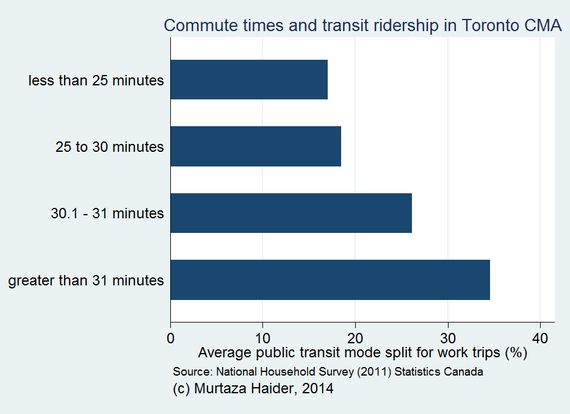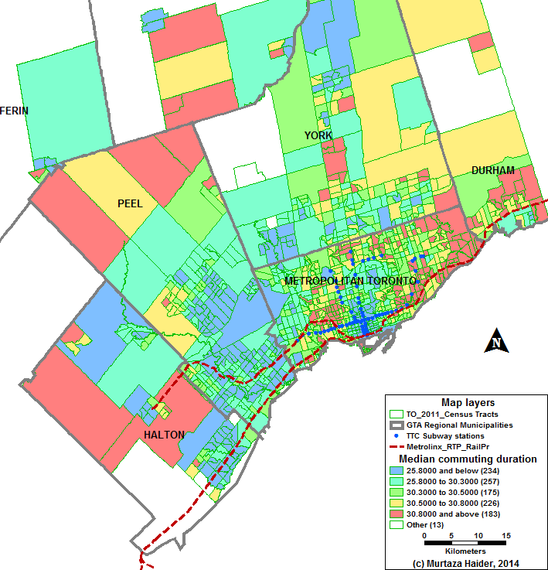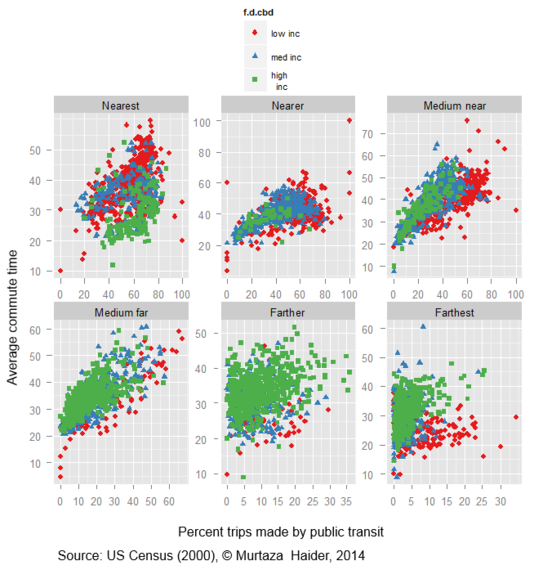The first casualty of war, and the debate on public transit, is truth. Well-meaning environmentalists and transit enthusiasts routinely overstate the benefits of public transit and its capabilities. At the same time, the Canadian news media promote such misrepresentations that could hurt the discourse on public transit.
The latest in this series is an op-ed by David Suzuki and Faisal Moola in the Globe and Mail in which they make unsubstantiated claims about public transit's benefits and then urge the newly elected Premier, Kathleen Wynne, to hurry into spending $29 billion in transit investments. Messrs. Suzuki and Moola argue that transit-oriented communities "benefit from reduced congestion with shorter commuting times." The reverse is true for Canada where transit trips are 81 per cent longer in duration than those by car.
The Canadian news media often promotes opinions that misrepresent the public transit's reality, such as the myth that more public transit will reduce congestion or travel times. Neither more public transit nor more freeways will reduce traffic congestion or travel times. In fact, average trip times will increase for cities where a large number of commuters switch from using cars to public transit. Premier Kathleen Wynne and the newly minted Minister of Transportation in Ontario, Steven Del Duca, must be cognizant of the unsolicited advice on infrastructure spending that is devoid of logic and facts.
Take the Suzuki and Moola argument that transit-oriented communities benefit from shorter commute times. Instead, communities in urban Canada with high transit ridership report longer commute durations.
Last year in July, I wrote in the Globe and Mail to expose this myth using data from Statistics Canada's 2011 National Household Survey. "Consider the example of Vancouver and Montreal, where travel to work by car takes on average 26.5 minutes. At the same time, commuting by public transit takes on average 42 minutes," I wrote.
The 2011 National Household Survey offers a treasure trove of information on commute times and modes of travel at the neighbourhood level (census tracts) for Canada's large cities. A simple tabulation for work trips in the Toronto Census Metropolitan Area (CMA) reveals that communities with higher transit use report longer, and not shorter, commuting times (see the chart below).

Some transit experts argue that commute times by high-speed rail transit are shorter. It is true for individual trips, but not for the entire communities. Commuters in transit-dependent communities, with ready access to subways, can take faster transit to their destinations, however shorter duration trips are enjoyed only by those whose trip lengths are shorter.
This point is illustrated with a map of Toronto neighbourhoods that depicts the median commute times for each neighbourhood (see the map below). The neighbourhoods are colour coded to represent the median commuting duration. Blue coloured neighbourhoods have shorter commute duration, whereas dark-pink-coloured neighbourhoods have the longer duration. The dark-blue coloured dots represent the location of subway stations. Notice that neighbourhoods located close to Toronto's downtown report shorter commute durations whereas those located farther away, especially in Scarborough, report longer commute durations, even when a subway station is located within or near the neighbourhood.

One thing is obvious from the above map: shorter duration commutes are as much a function of mode choice as they are of the location. Neighbourhoods located near Toronto's downtown report shorter commute durations than those located farther away. Remotely located neighbourhoods, such as communities in Scarborough or North York in Toronto, with a large proportion of workers employed in and near a city's downtown, have longer duration commutes even by rapid transit because of the greater distances between suburban trip origins and trip destinations in or near the CBD.
This raises the question about the shorter commutes for ex-urban communities in Brampton, Mississauga, and Oakville. The map below provides a partial answer to that riddle. I have added the red dashed lines depicting the GO Transit's Lakeshore route and other routes for Milton and Mississauga. Also note that the thicker dark grey colour lines represent the boundaries for the regional municipalities of Halton and Peel (to the west of Toronto), Toronto in the middle, York (to the north of Toronto) and Durham (to the east of Toronto).
The ex-urban communities in the West, which report shorter commutes, benefit from the GO Transit's service to and from Union Station in downtown Toronto. The white collar workers living in the expensive neighbourhoods along the GO Transit lines drive in the morning to GO Transit stations, park their cars for free, and hop onto the fast trains to downtown Toronto. This transit nirvana is made possible by the transit riders' ability to pay premium housing prices, free parking for cars at GO station, the downtown location of the workers' employment, and the frequent GO Transit service throughout the day.
But why is the same not true for the eastern suburbs of Scarborough and ex-urban eastern suburbs in the Durham region where communities along the GO Transit line report longer trip durations. There are two plausible explanations. First, since GO rapid transit service efficiently serves trip ends in and near downtown Toronto, it fails to offer the same commuting advantage to workers whose employment destination is not in the downtown core. Second, the GO Transit service may not have as frequent and strategically located stations with abundant free parking in the East of Toronto than what it offers in the West of Toronto.

New York is no different
Some transit enthusiasts can object to the Toronto-centric analysis presented here and may point to transit success cities, such as New York or Paris. Given that Canadian cities have more in common with North American cities, let's see if the transit-oriented communities in New York, which benefit from much more frequent and intensive rapid transit service than any Canadian city, report shorter commutes.
I relied on the 2000 U.S. Census to plot the relationship between transit ridership intensity in a community (Census Tract) and average commute duration. I segregated communities by distance to the downtown in Manhattan to account for dissimilarities among communities in Bronx, Brooklyn, Manhattan, Queens and Staten Island. The communities are, therefore, labelled as nearest, nearer, medium near, medium far, farther, and farthest to account for distance from downtown Manhattan. Because New York is known for extreme income disparities between the very rich and the rest, I also divided communities into low, middle, and high incomes.
The results are presented in the chart below, which shows that average commute times increase with transit ridership irrespective of how far or near the community is from downtown Manhattan. Also, low-income communities nearest to the downtown have longer commute times than mid- or high-income communities. This relationship reverses with distances from downtown Manhattan where high-income communities in remotely located suburbs report longer commute times than low-income communities.
What does not change, however, is the fact that transit-oriented communities in New York report higher commute times than the rest.

With $29 billion in transport infrastructure spending already earmarked for Ontario, Steven Del Duca and Kathleen Wynne, will receive tons of unsolicited advice, including this op-ed. They should, however, base their investment decisions on sound analysis rather than conjecture.
ALSO ON HUFFPOST:
